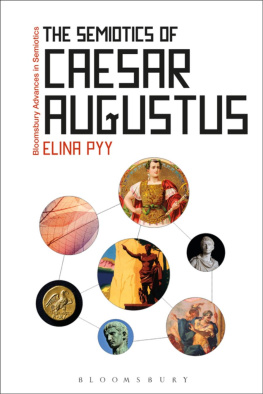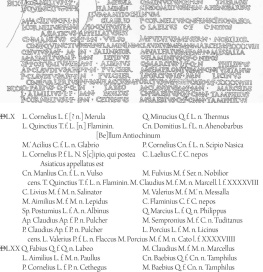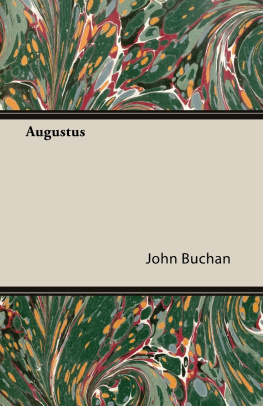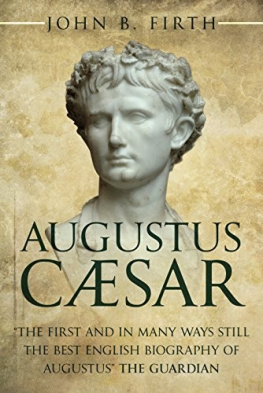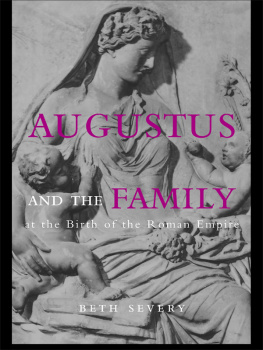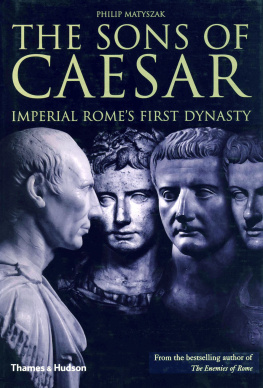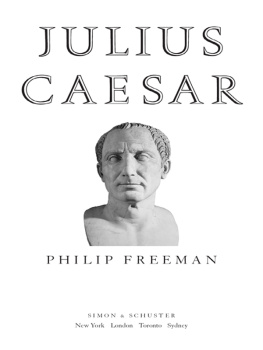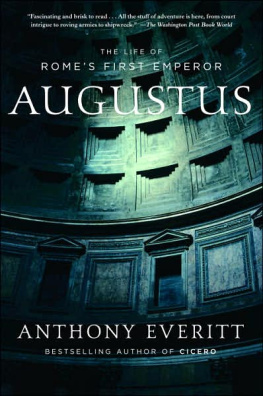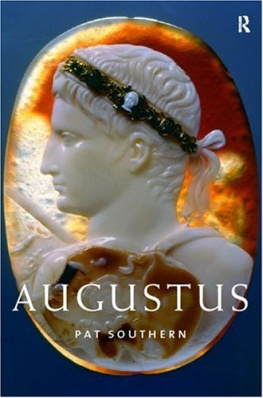The Semiotics of Caesar Augustus
Bloomsbury Advances in Semiotics
Semiotics has complemented linguistics by expanding its scope beyond the phoneme and the sentence to include texts and discourse, and their rhetorical, performative, and ideological functions. It has brought into focus the multimodality of human communication. Advances in Semiotics publishes original works in the field demonstrating robust scholarship, intellectual creativity, and clarity of exposition. These works apply semiotic approaches to linguistics and non-verbal productions, social institutions and discourses, embodied cognition and communication, and the new virtual realities that have been ushered in by the Internet. It also is inclusive of publications in relevant domains such as socio-semiotics, evolutionary semiotics, game theory, cultural and literary studies, humancomputer interactions, and the challenging new dimensions of human networking afforded by social websites.
Series Editor: Paul Bouissac is Professor Emeritus at the University of Toronto (Victoria College), Canada. He is a world-renowned figure in semiotics and a pioneer of circus studies. He runs the SemiotiX Bulletin [www.semioticon.com/semiotix] which has a global readership.
Titles in the Series:
A Buddhist Theory of Semiotics, Fabio Rambelli
Computable Bodies, Josh Berson
Critical Semiotics, Gary Genosko
Introduction to Peircean Visual Semiotics, Tony Jappy
Semiotics and Pragmatics of Stage Improvisation, Domenico Pietropaolo
Semiotics of Drink and Drinking, Paul Manning
Semiotics of Happiness, Ashley Frawley
Semiotics of Religion, Robert Yelle
The Language of War Monuments, David Machin and Gill Abousnnouga
The Semiotics of Clowns and Clowning, Paul Bouissac
The Semiotics of Che Guevara, Maria-Carolina Cambre
The Semiotics of Emoji, Marcel Danesi
The Semiotics of Light and Shadows, Piotr Sadowski
The Semiotics of X, Jamin Pelkey
The Visual Language of Comics, Neil Cohn
The Semiotics of Caesar Augustus
Elina Pyy
Bloomsbury Academic
An imprint of Bloomsbury Publishing Plc

Writing this book has been a long, compelling, and at times challenging process with which I have been fortunate to get help and assistance from many wise and encouraging people. First and foremost, I want to thank the Kone Foundation for funding my research for the past two and a half years, thus making it possible for me to work as a full-time researcher. My most heartfelt thanks to the organizers and the participants of the Auguste travers les ges (2014) conference Professor Paul Bouissac in particular, who gave me the idea and encouragement for this book, and without whose support this project would never have got started. I am in great debt of the School of Classics, University of St Andrews, and of each and every colleague there with whom I discussed this project during my stay in Scotland, and who offered me their insight and help. In Finland, my colleagues and friends across different disciplines have been of great help to this project not only because of their expertise in most various topics, but also because of the peer support and encouragement they have offered me. In particular, I thank Dr Reima Vlimki for taking the time to read a former version of a part of this book, as well as Paula Rajala and Dr Maijastina Kahlos for pointing me to the right direction in my search for source material. Last but not least, I want to express my greatest gratitude to my family and my closest friends, who have patiently put up with my endless monologues about Augustus for the past three years, as well as with the inexcusable neglect and stress on my part during the last six months of the writing process. I imagine they must be at least as happy as I am that Semiotics of Caesar Augustus has finally come to a conclusion. In particular, my unending gratitude and respect go to my partner Tim Dieltiens, who not only understands and supports but indeed cherishes my obsession, and who has welcomed Augustus into our family in a way I could not have imagined possible.
On September 23, 63 BC, Gaius Octavius, scion of the Octavii family, was born on Palatium, Rome. On August 19, AD 14, he died in Nola as Imperator Caesar divi filius Augustus, the sovereign ruler of one of the most powerful empires in the history of humankind. What happened between these dates is a question that has fascinated scholars, artists, and their audiences for over two millennia, and created an immeasurable number of interpretations about the life, person, career and achievement of Caesar Augustus.
Among these interpretations, there are no two alike. One of the best-known and the most ambiguous characters in ancient history, Augustus is a prime example of a historical figure who is reconstructed and reinvented every time his story is told. Different representations of the emperor differ from one another to such an extent that it is sometimes difficult to believe they really are depictions of the same historical character. Depending on the context, Octavian-Augustus might appear either as a power hungry opportunist or as an insightful political reformer, as a calm and considerate ruler or as an egocentric tyrant. What is necessary to acknowledge is that any version of Augustus that one comes across in a literary work (ancient or modern, poetic or scientific) is first and foremost a fabrication. Accounts of his life are literary reconstructions of a historical figure and, as such, works of fiction. In a sense, they cannot be anything else, as the past is always a set of stories constructed by contemporary discourses. The historical truth (an illusion as it is) slips from the modern readers grasp and the real Augustus (a fiction greater still) ends up being at best a combination of different authors viewpoints and interpretations. It is impossible to tear down all the layers of legend, and to reach the man behind the myth.
For the purposes of this book, it is also unnecessary. Semiotics of Caesar Augustus is based on my firm belief that, while one cannot grasp Augustus as a historical figure, it is no reason to give up on talking about him. In effect, this book celebrates all the talking about him that has been done in the past half a century or so. Instead of Augustus himself, it puts in the limelight the different meanings and significances given to the princeps. Instead of trying to write yet another master narrative about his life and achievement, it digs deeper in the different readings of the emperor, and calls attention to the many faces of Augustus in literature and in popular culture. As such, Semiotics of Caesar Augustus is, of course, yet another interpretation of the age-old topic. It offers one reading of Caesar Augustusmy ownand hands it over to the reader, not to be taken at face value but to be assessed, reworked and revised.
Methodologically, Semiotics of Caesar Augustus is a combined study of semiotics and classical reception studiesit is based on the hypothesis that representations and readings of Augustus, appearing over and over again in the course of history, reveal more about the circumstances, the atmosphere, and the spirit of their time of production than about Augustus himself. Drawing from my background in classical studies, I look into select sources from the latter part of the twentieth century and from the turn of the millennium, asking why, 2,000 years after his death, Augustus continues to be relevant to modern discourses of power, humanity, tyranny and peace.
Next page
